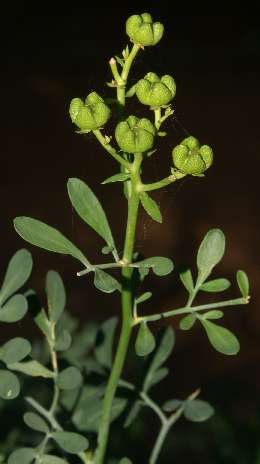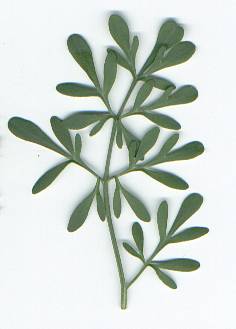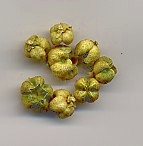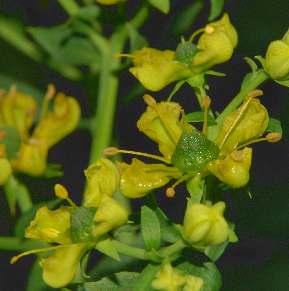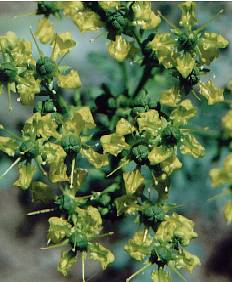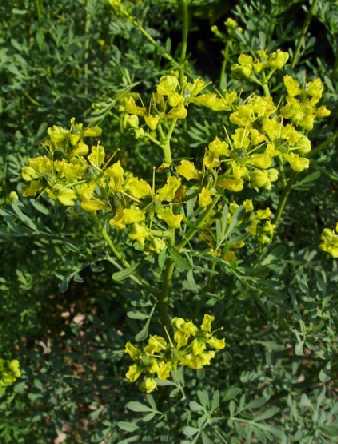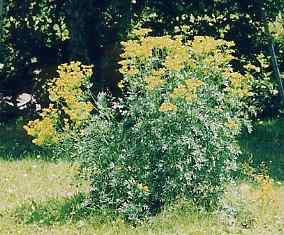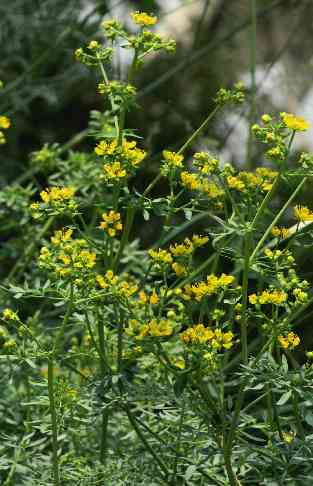
|
| Garden rue, flowering plant |
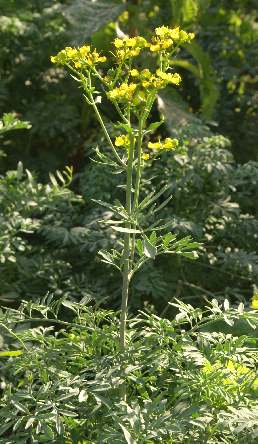
|
| Rue in flower |
bitterness, especially in poetry. During the last 2000 years, this ambivalent position gave way to an almost universal rejection in our days.
Apart from occasional use in Italy, rue’s popularity is greatest in Ethiopia. Fresh rue leaves are sometimes used as a coffee flavourant (remember that coffee is probably native to Ethiopia!), and rue is also sometimes mentioned as a components in the national spice mix, berbere [በርበሬ] (see long pepper). Ethiopian cuisine is unique in using not only rue leaves, but also the dried fruits (rue berries) with their more intensive, slightly pungent flavour that is well preserved on drying.
To cook with rue is usually considered old-fashioned, which is probably because half a century ago, rue was significantly more popular than today so that it is seen a leftover from past times; second, older people frequently develop a positive attitude towards bitter taste and tend to use bitter herbs and spices more liberally. And yet, rue is definitely worth a try; meat, eggs and cheese all can profit from this nearly unknown spice, provided care is taken not to overdose. The bitter taste is reduced by acids; thus, a leaf or rue may be used to flavour pickled vegetables, make a salad more interesting or add a very personal touch to home-made herbal vinegar (see dill).
Because of its general affinity to acidic food, rue goes well with spicy Italian
tomato sauces containing olives and capers (together with marjoram, basil and lovage).
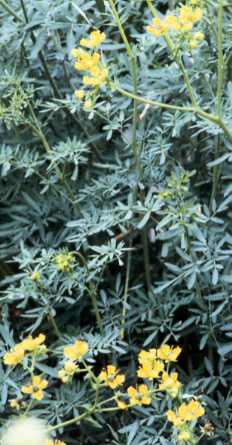
|
| Fringed rue, Ruta chalepensis, from the Mediterranean |
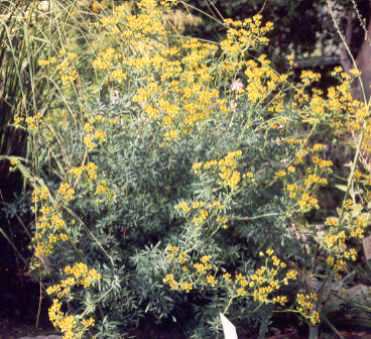
|
| Aleppo rue, Ruta chalepensis |
If a cook wants rue flavour without bitterness, he might make use of the fact that rue leaves excrete the essential oil much more quickly than the bitter rutin (very similar to tea leaves). Thus, the fresh leaves may be soaked in a slightly boiling sauce or other liquid for a short time (typically, one minute) and discarded afterwards. By this a procedure, a maximum of flavour at a minimum of bitterness is achieved. See also parsley on the topics of herb bundles (bouquet garni).
Like many other bitter spices (e. g., zedoary), rue
is popular for flavouring liquors. Besides stimulating the appetite, bitter
liquors have some tonic, stomachic and even bile-stimulating properties, all of
which are advantageous after a rich feast. One of the most common liquors
containing rue is grappa con ruta, an Italian draff brandy
flavoured with a small branch of rue per bottle. For this, the related
Fringed Rue (Aleppo rue, R. chalepensis) is usually preferred.
Rue must not be confused with southernwood, another bitter herb with a stronger, more lemon-like fragrance. Both plants are today of small importance culinarily, and both are considered potentially poisonous, although their toxicity may be neglected in amounts suitable for cooking (their bitter taste will, for the most part, make accidental poisoning impossible).
Extreme overdoses of the pure essential oil
of rue have even been reported to cause abortus, and the plant was even called
herbe à la belle fille Herb of fair maidens
in French due to its abortive action. Furthermore, severe poisonings have
resulted from uncontrolled medical use of the root. Some North American sources
treat rue as a deadly poison, which I find quite ridiculously exaggerated
(unless the plant develops a different spectrum of secondary metabolites
in Europe and in America).
